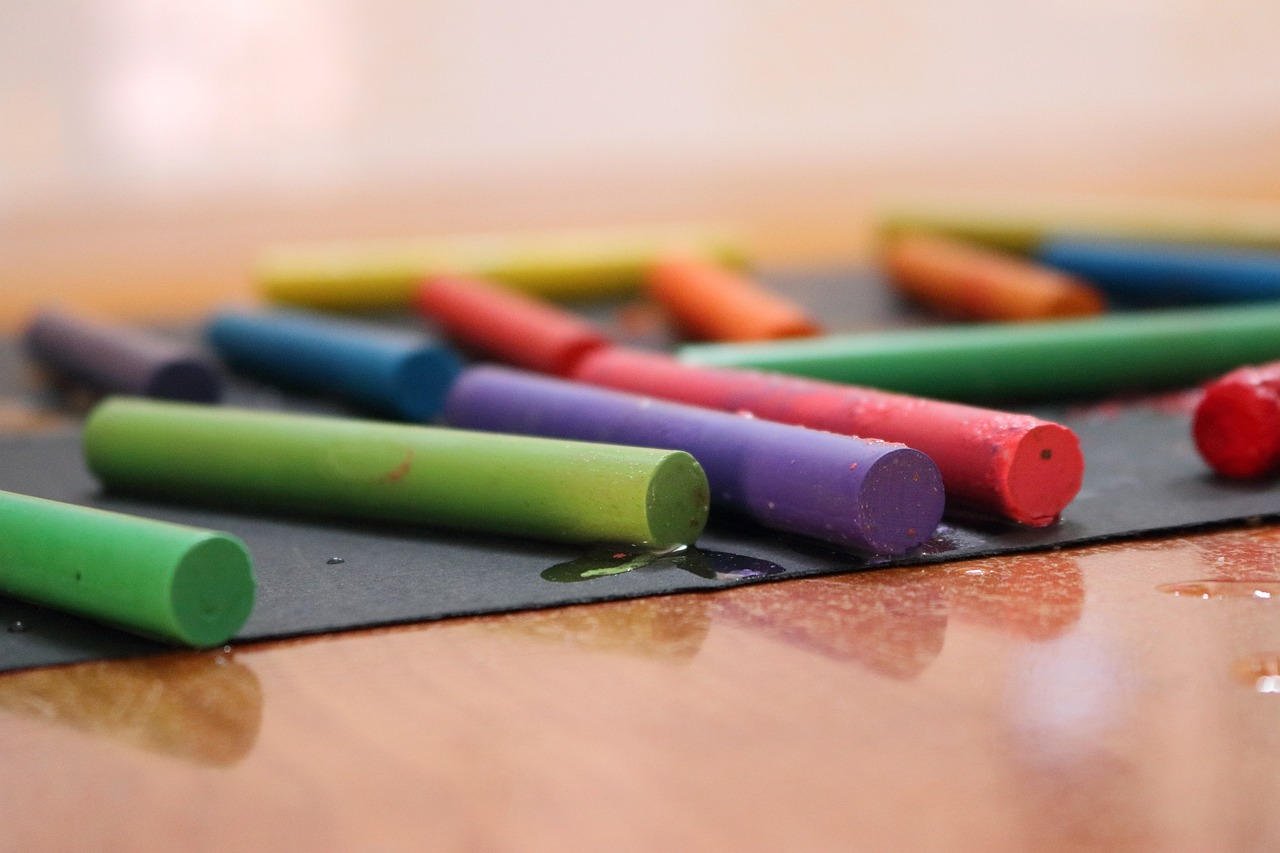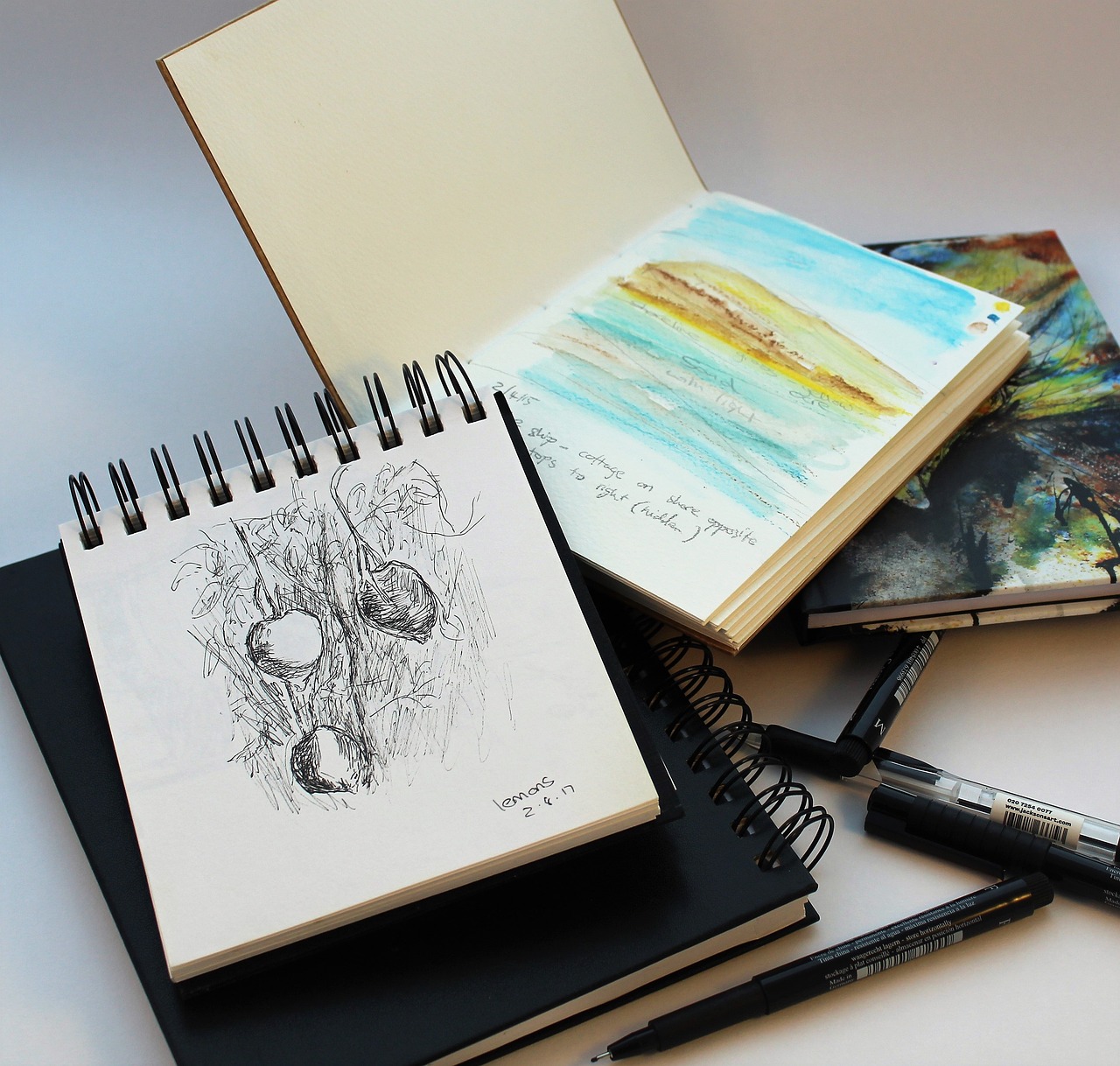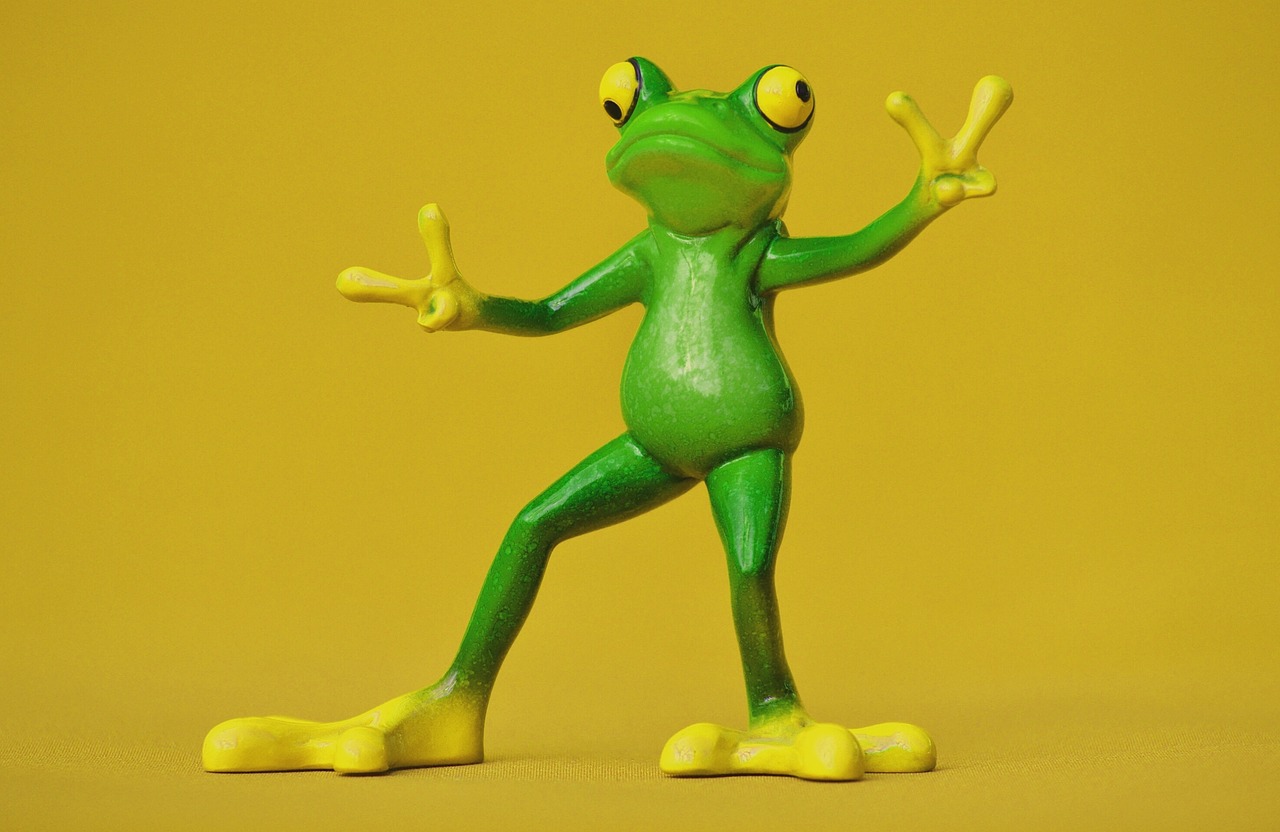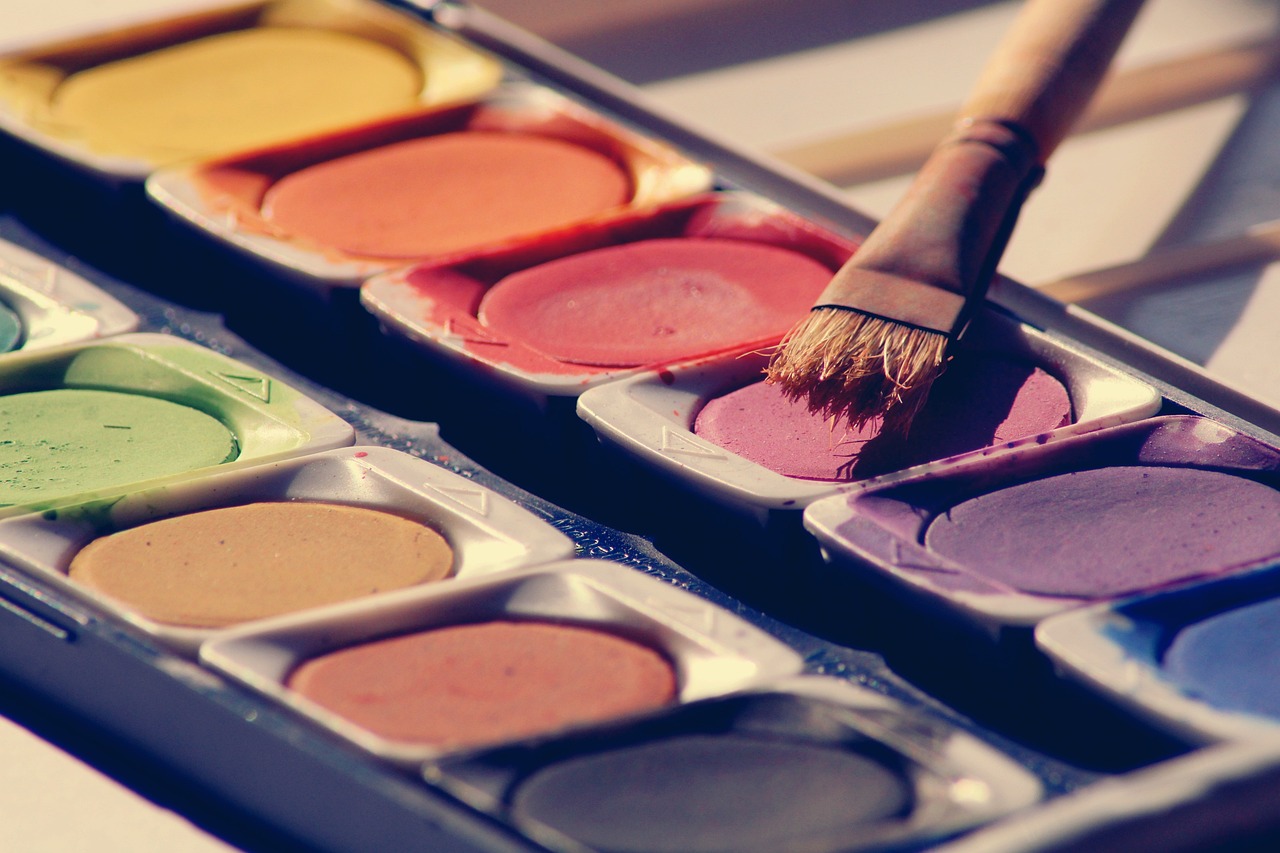The Art of Sketching: Essential Techniques
Welcome to the fascinating world of sketching! Whether you're a budding artist or someone who has been wielding a pencil for years, understanding the essential techniques of sketching can truly transform your artistic journey. Sketching is not just about putting pencil to paper; it’s about capturing the essence of what you see and feel. It's your chance to express emotions, thoughts, and ideas in a visual format. Imagine being able to convey a story or a mood through a few strokes—how exciting is that?
In this article, we will explore fundamental sketching techniques that can enhance your artistic skills, providing practical tips and insights for both beginners and seasoned artists alike. From mastering basic shapes to understanding shading techniques, we will cover it all. So, grab your sketchbook and let’s dive into the art of sketching!
Mastering basic shapes is crucial for sketching. Why, you ask? Because everything you see can be broken down into simple geometric forms! Think about it: a human figure can be represented with ovals and rectangles, while a tree can be depicted with circles and triangles. This method not only improves accuracy but also helps you understand **proportions** better. When you can simplify complex subjects into basic shapes, you can sketch with greater confidence.
To practice this technique, try sketching everyday objects around you. Start by identifying the basic shapes that compose them. For instance, when sketching a chair, notice how the seat can be a rectangle, and the legs can be straight lines. By focusing on these shapes, you’ll find it easier to build up to more intricate details later on.
Line quality can dramatically affect the mood and depth of a sketch. Think of a line as the voice of your drawing; it can whisper subtlety or shout boldness. Here, we will explore different line types and how to use them effectively to convey texture and emotion. A thin, delicate line might evoke a sense of fragility, while a thick, heavy line can create a feeling of strength. Understanding how to manipulate line quality will allow you to bring your sketches to life.
Learn how varying line thickness and pressure can create a sense of depth in your sketches. This technique adds dimension and visual interest to your artwork. Imagine you’re drawing a landscape; using thicker lines in the foreground and thinner lines in the background can create an illusion of depth, making your artwork feel more three-dimensional. It’s like layering a cake—each layer adds to the overall experience!
Hatching and cross-hatching are effective shading techniques that can enhance your sketches with tonal variation. Hatching involves drawing parallel lines, while cross-hatching adds another set of lines at an angle. These techniques can give your sketches a sense of volume and realism. Practice these methods by shading in an apple or a sphere, observing how the light interacts with the surface.
Contour lines define the edges of objects, much like a frame around a beautiful painting. Discover how to use contour lines to create a sense of form and volume in your sketches. They can guide the viewer’s eye and emphasize important features. When you draw a figure, for instance, using contour lines can help you capture the curves and angles that define its shape.
Gesture drawing focuses on capturing the essence of a subject quickly. This section covers techniques for improving your speed and fluidity in sketching dynamic poses. Think of it as a dance; you need to feel the rhythm of the subject and translate that into your lines. Set a timer and challenge yourself to sketch a figure in just a few minutes. This practice will help you loosen up and become more confident in your abilities.
Shading adds realism to sketches, transforming flat images into lifelike representations. Here, we discuss various shading techniques, including blending and stippling, to create lifelike effects in your drawings. Blending involves smoothing out your pencil strokes for a soft transition between light and shadow, while stippling uses small dots to create texture. Both techniques can be incredibly effective, depending on the effect you wish to achieve.
Light and shadow play a vital role in sketching. Observing how light interacts with objects can drastically improve your sketches. This subsection explains how to observe and replicate light sources to enhance the three-dimensionality of your sketches. Pay attention to where the light hits and where shadows fall. It’s like a game of hide and seek—understanding this interaction will make your drawings pop!
Incorporating color can elevate your sketches to a whole new level. Learn about color theory and how to effectively use color to enhance mood and impact in your artwork. Color can evoke emotions; for instance, warm colors can create a sense of energy, while cool colors can invoke calmness. Experimenting with color can be like adding spices to a dish—just the right amount can transform your creation!
- What materials do I need to start sketching? You can start with just a pencil and paper! As you progress, consider investing in quality sketching pencils, erasers, and sketchbooks.
- How often should I practice sketching? Consistency is key! Try to sketch daily, even if it's just for a few minutes. Over time, you’ll see improvement.
- Can I sketch from photographs? Absolutely! Sketching from photos can help you understand shapes, light, and shadow, but don’t forget to practice from life too!

Understanding Basic Shapes
Mastering basic shapes is not just a fundamental step in sketching; it's like learning the ABCs of art. Imagine trying to build a house without a solid foundation. Similarly, when you sketch, breaking down complex subjects into simple geometric forms can drastically improve your accuracy and proportion. Think of it this way: every intricate detail you see in a subject can be traced back to a simple shape. A human figure can be simplified into ovals and rectangles, while a tree can be represented by a triangle for the foliage and a rectangle for the trunk. This method not only makes sketching less intimidating but also enhances your confidence as you tackle more complicated subjects.
When you start with basic shapes, you're essentially giving yourself a roadmap. For example, consider the following breakdown of common objects:
| Object | Basic Shapes |
|---|---|
| Human Figure | Ovals, Rectangles, Circles |
| Tree | Triangle, Rectangle |
| House | Square, Triangle |
| Car | Rectangles, Circles |
By identifying the basic shapes that compose the objects around you, you can sketch with greater accuracy. This approach allows you to focus on proportions and relationships between shapes rather than getting lost in details too early in the process. For instance, if you're drawing a car, start with rectangles for the body and circles for the wheels. Once you have the basic structure, you can refine your sketch by adding details like windows and headlights.
Moreover, understanding basic shapes also aids in developing your visual language. It helps you see the world through the lens of an artist, where every object is a composition of shapes waiting to be captured on paper. As you practice, you'll find that your brain begins to automatically break down complex scenes into manageable parts, making the sketching process smoother and more enjoyable.
In conclusion, embracing the concept of basic shapes is a powerful technique that can transform your sketching skills. Remember, every masterpiece starts with a simple form. So grab your sketchbook, and the next time you encounter a complex subject, take a moment to deconstruct it into its basic shapes. You'll be amazed at how much easier it becomes to capture the essence of what you're drawing!
- Why are basic shapes important in sketching? They serve as the foundation for more complex forms, making it easier to achieve accurate proportions.
- Can I use basic shapes for all subjects? Absolutely! Most subjects can be simplified into basic geometric forms.
- How can I practice using basic shapes? Start by sketching everyday objects, breaking them down into their basic shapes before adding details.

Line Quality and Variation
When it comes to sketching, the quality of your lines can make or break your artwork. Imagine you're painting a picture with words; each line you draw is like a brushstroke that adds emotion and depth to your canvas. The variation in line quality—whether it's thick, thin, smooth, or jagged—can dramatically alter the mood of your sketch. Think about it: a bold, heavy line might convey strength and confidence, while a delicate, wispy line could express fragility or softness. Understanding how to manipulate these qualities is essential for any artist looking to elevate their work.
Let’s dive into the different types of lines you can use in your sketches. Each type serves a unique purpose, and mastering them can enhance your artistic expression:
- Contour Lines: These are the defining lines that outline shapes. They can be used to create a sense of form and volume in your sketches.
- Implied Lines: These lines suggest a shape or form without being explicitly drawn. They guide the viewer's eye and create a sense of movement.
- Gesture Lines: Quick and fluid, these lines capture the essence of movement and pose, perfect for dynamic subjects.
Now, let’s talk about creating depth with lines. One of the most effective ways to add dimension to your sketches is by varying the thickness and pressure of your lines. For instance, using a heavier line in the foreground can draw attention and create a sense of closeness, while lighter lines in the background can suggest distance. This technique not only adds visual interest but also helps to establish a clear hierarchy in your artwork.
Another fascinating technique is hatching and cross-hatching. These methods involve drawing parallel lines, and intersecting them to create shading and texture. Hatching can enhance the three-dimensionality of your sketches, allowing you to depict light and shadow effectively. Imagine you’re sculpting with lines; each stroke adds depth and character to your subject. Mastering these techniques can transform a flat sketch into a vibrant representation of reality.
Moreover, incorporating contour lines can significantly enhance the form of your sketches. These lines outline the edges of objects, creating a clear definition that helps your viewer understand the shapes and volumes in your artwork. Think of contour lines as the framework of a building; without them, the structure would lack stability and clarity. By using contour lines effectively, you can create sketches that not only look good but also feel complete and polished.
In conclusion, the quality and variation of your lines are fundamental to the art of sketching. By experimenting with different types of lines and techniques, you can discover your unique style and bring your artistic vision to life. Remember, each line you draw is a step towards mastering your craft, so embrace the journey and let your creativity flow!
- What is line quality in sketching? Line quality refers to the characteristics of the lines you draw, including their thickness, smoothness, and texture. It plays a crucial role in conveying emotion and depth in your artwork.
- How can I practice line variation? Start by drawing simple shapes and experiment with different line weights and styles. Try to convey different emotions or textures using only line variation.
- What are hatching and cross-hatching? Hatching involves drawing parallel lines to create shading, while cross-hatching uses intersecting lines to enhance texture and depth in your sketches.

Creating Depth with Lines
Creating depth in your sketches is like adding a secret ingredient to a recipe; it transforms the ordinary into the extraordinary. When you think about it, depth isn't just about what you see—it's about how you feel when you look at your artwork. By varying the thickness and pressure of your lines, you can manipulate the viewer's perception, guiding their eyes through the composition and creating an engaging visual experience.
Imagine you're sketching a tree. If you use a thin line for the branches, it gives them a delicate appearance, almost as if they're swaying in the wind. Conversely, a thicker line at the base of the trunk provides a sturdy foundation, suggesting strength and stability. This interplay between different line weights not only adds realism but also evokes emotions, making the viewer feel the essence of the subject.
To effectively create depth with lines, consider the following techniques:
- Varying Line Weight: Use a range of line weights to depict different elements. Thicker lines can indicate foreground objects, while thinner lines can suggest background elements.
- Pressure Control: Adjusting the pressure on your pencil or pen allows for dynamic line variations, enhancing the overall impact of your sketch.
- Overlapping Lines: When lines overlap, they create a sense of layering, which is crucial for establishing depth. Think of it as stacking transparent sheets; the more you stack, the more dimensional your artwork becomes.
Let's break it down further with a simple table that illustrates how line thickness can affect perception:
| Line Thickness | Perceived Effect |
|---|---|
| Thin | Delicate, distant, or light elements |
| Medium | Balanced, neutral elements |
| Thick | Bold, close, or heavy elements |
Incorporating these techniques into your sketches can significantly enhance their depth and dimensionality. Think of your artwork as a stage; the lines you choose are the actors, and by varying their roles, you create a captivating performance. Remember, every line counts, so make them work for you!
As you practice these methods, don't hesitate to experiment. The beauty of sketching lies in its flexibility; there are no rigid rules. Allow your intuition to guide you, and soon enough, you’ll find yourself creating sketches that not only depict reality but also tell a story, inviting viewers to step into your world.
- What is the best pencil for sketching? A range of pencils from H (hard) to B (soft) is ideal, as they allow for various line qualities.
- How can I improve my line quality? Practice controlling the pressure and speed of your strokes, and experiment with different tools.
- Is it necessary to use color in sketches? No, many artists create stunning works in monochrome. However, color can enhance mood and depth if used effectively.

Using Hatching and Cross-Hatching
When it comes to sketching, hatching and cross-hatching are two of the most powerful techniques you can wield in your artistic arsenal. These methods not only add depth and dimension to your drawings but also allow you to express a wide range of textures and tones. Imagine you're painting a sunset; the vibrant hues blend together, but it's the subtle shadows that give it life. Similarly, hatching and cross-hatching can breathe life into your sketches by creating the illusion of light and shadow.
So, what exactly are hatching and cross-hatching? Hatching involves drawing parallel lines closely together, while cross-hatching takes it a step further by layering another set of parallel lines over the first, usually at an angle. This technique can be likened to weaving a fabric; the more layers you add, the richer and more complex the texture becomes. By varying the distance between the lines and the pressure applied, you can create different levels of shading and depth.
Let’s dive deeper into how to effectively use these techniques:
- Start Simple: Begin with basic shapes. Draw a circle and practice hatching on one side to simulate light hitting the surface. This will help you understand how light interacts with forms.
- Vary Line Density: The closer your lines are, the darker the area appears. Conversely, wider spacing will result in lighter shading. Experiment with this to create a gradient effect.
- Practice Angles: When you cross-hatch, try different angles. This can add complexity and interest to your shading. For instance, using a 45-degree angle for the first layer and a 90-degree angle for the second can create a dynamic texture.
One of the most beautiful aspects of hatching and cross-hatching is their versatility. You can use these techniques to depict anything from the rough bark of a tree to the soft folds of fabric. As you practice, pay attention to how different pressures and speeds can alter the final look of your work. Remember, sketching is not just about the finished product; it’s about the journey and the exploration of your creative instincts.
To illustrate the impact of these techniques, consider the following table that compares the effects of hatching and cross-hatching:
| Technique | Effect | Best Used For |
|---|---|---|
| Hatching | Creates a smooth transition of light to shadow | Basic shapes, soft textures |
| Cross-Hatching | Adds depth and complexity | Detailed textures, dynamic shading |
In conclusion, mastering hatching and cross-hatching can significantly enhance your sketching skills. These techniques allow you to convey not just form and volume but also emotion and atmosphere. As you embark on your artistic journey, remember to embrace experimentation. Try out different styles, and don’t be afraid to make mistakes. Each line you draw is a step toward developing your unique artistic voice.
- What materials do I need for hatching and cross-hatching? You can use any drawing tool, but pencils and fine liners are popular choices for their precision.
- Can I use hatching and cross-hatching in digital art? Absolutely! Many digital art programs offer brushes that mimic these traditional techniques.
- How do I know when to use hatching versus cross-hatching? Generally, hatching is great for lighter areas, while cross-hatching can be reserved for darker, more complex regions.

Incorporating Contour Lines
When it comes to sketching, contour lines are like the backbone of your artwork. These lines define the edges and shapes of objects, providing a framework that guides your hand as you translate what you see onto paper. Think of contour lines as the outline of a treasure map; they lead you to the hidden gems of form and volume in your sketches. By mastering contour lines, you can create a more defined and structured representation of your subject.
One of the most exciting aspects of using contour lines is their ability to convey depth and dimension. Imagine drawing a simple apple. If you merely sketch a circle, it might look flat and uninteresting. However, by incorporating contour lines that follow the apple's curves and dips, you breathe life into your drawing. This technique not only enhances the visual appeal but also helps you understand the three-dimensionality of the object you are sketching.
To effectively incorporate contour lines into your sketches, start by observing the subject closely. Look for the main outlines that define its shape. You might want to use a light touch at first, allowing your pencil to glide over the paper, capturing the essence of the form. As you gain confidence, you can vary the pressure of your pencil to create thicker, bolder lines that emphasize certain features. This variation in line weight can guide the viewer’s eye and highlight the most important aspects of your drawing.
Another technique to enhance your contour line work is to practice continuous line drawing. This method requires you to draw without lifting your pencil from the paper, creating a single, unbroken line that captures the essence of your subject. This exercise not only improves your hand-eye coordination but also encourages you to see the subject as a whole rather than focusing on individual parts. It’s a fantastic way to develop a more intuitive understanding of form and space.
As you incorporate contour lines, don’t forget about the importance of negative space. This is the space around and between the subject. By paying attention to negative space, you can create a more balanced composition. For example, if you’re sketching a figure, observe the shapes formed by the space around the limbs and body. Incorporating these shapes into your contour lines can add complexity and interest to your artwork.
In summary, contour lines are essential for creating structure and depth in your sketches. By observing your subject closely, varying your line weight, practicing continuous line drawing, and considering negative space, you can elevate your sketching skills to new heights. So grab your sketchbook and start experimenting with contour lines; you'll be amazed at how they can transform your drawings!
- What are contour lines? Contour lines are the lines that define the edges and shapes of an object, helping to create a sense of form and volume in a drawing.
- How do I practice using contour lines? You can practice using contour lines by drawing objects from life and focusing on their outlines, or by engaging in continuous line drawing exercises.
- Why are contour lines important in sketching? They provide structure and depth, helping to convey the three-dimensionality of the subject and improve the overall composition of your artwork.

Expressive Gesture Drawing
Gesture drawing is like capturing a fleeting moment in time—it’s all about essence and movement. Imagine you’re watching a dancer perform; their fluid motions and dynamic poses are what you want to capture on paper. The beauty of gesture drawing lies in its ability to convey the energy and emotion of a subject without getting bogged down in details. This technique is particularly useful for artists who want to improve their speed and fluidity in sketching, as it encourages you to focus on the overall form rather than the minutiae.
To get started with gesture drawing, you can use a variety of mediums—pencil, charcoal, or even ink. The key is to work quickly, often in sessions that last anywhere from 30 seconds to a few minutes. This time constraint pushes you to make bold strokes and capture the main lines and shapes of your subject. Think of it as a sprint rather than a marathon; you want to get your ideas down on paper before they slip away. In this fast-paced environment, you’ll find that your hand becomes more confident, and your eye learns to see the essential forms of the body.
When practicing gesture drawing, consider these essential tips:
- Start with basic shapes: Break down the figure into simple geometric forms. This will help you understand the underlying structure.
- Use fluid lines: Keep your hand moving smoothly across the page. Avoid lifting your pencil too much, as this can disrupt the flow.
- Capture movement: Focus on the action of the pose. Ask yourself, what is the subject doing? How can you express that energy on your paper?
- Limit details: Try not to get caught up in the small stuff. Instead, focus on the overall gesture and how it makes you feel.
Another great way to enhance your gesture drawing skills is to practice with live models or reference images. You can set a timer and challenge yourself to create a series of quick sketches, gradually increasing the complexity of the poses as you gain confidence. Remember, the goal is not to create a masterpiece but rather to develop your ability to see and express movement. Think of each sketch as a stepping stone towards greater artistic expression.
As you become more comfortable with gesture drawing, you’ll notice that it not only improves your sketching skills but also enhances your overall understanding of anatomy and proportion. You’ll start to see how the body moves and how different poses can convey various emotions. This awareness will, in turn, enrich your other artwork, enabling you to create more dynamic and engaging pieces.
Q: How long should I spend on each gesture drawing?
A: It’s best to keep your sessions short, typically between 30 seconds to 5 minutes. This encourages quick thinking and spontaneity.
Q: Do I need a model for gesture drawing?
A: While live models are ideal, you can also use photographs or videos to practice. Just ensure they capture dynamic poses.
Q: Can I use any medium for gesture drawing?
A: Absolutely! Pencils, charcoal, ink, or even digital tools can be used. Choose a medium that allows you to work quickly and expressively.

Shading Techniques for Realism
Shading is one of the most powerful tools in an artist's arsenal when it comes to creating realistic sketches. It’s like the magic wand that transforms a flat drawing into a three-dimensional masterpiece. Imagine looking at a drawing and feeling as though you could reach out and touch it; that's the effect effective shading can have! To truly master shading, it’s essential to understand various techniques that can add depth and dimension to your artwork.
One of the most popular shading techniques is blending. This method involves smoothly transitioning between different shades, creating a soft, gradient effect. You can achieve blending with tools like blending stumps, your fingers, or even a soft cloth. This technique is particularly useful when you're sketching skin tones or delicate fabrics, as it mimics the way light interacts with surfaces. To practice blending, start with a simple gradient from dark to light and work on achieving a seamless transition.
Another technique worth exploring is stippling, which involves creating texture through a series of dots. This method requires patience but can yield stunning results, especially for creating shadows and textures. As you dot your paper, think of how the density of your dots can affect the perceived darkness of a shadow. The closer the dots, the darker the area appears. It’s like building a visual language with tiny marks!
Understanding light and shadow is crucial for effective shading. When sketching, always consider where the light source is coming from. This awareness will guide you in determining where shadows should fall and how deep they should be. For instance, if the light is coming from the left, the right side of your subject will naturally be darker. Observing real-life objects under different lighting conditions can help you develop an eye for how light interacts with forms.
To illustrate the impact of light and shadow, consider the following table that outlines different lighting scenarios and their effects on shading:
| Lighting Scenario | Effect on Shading |
|---|---|
| Direct Light | Creates sharp contrasts and defined shadows. |
| Diffused Light | Softens shadows and reduces contrasts. |
| Backlight | Illuminates the edges and creates a halo effect. |
| Low Light | Enhances shadows, creating a dramatic effect. |
Incorporating color into your shading can elevate your sketches even further. Color theory plays a significant role in how we perceive light and shadow. For example, using warm colors can make areas appear closer, while cool colors can push them back. When shading, try to mix in subtle hues that reflect the environment around your subject. This technique not only adds realism but also infuses your artwork with emotion and mood.
Ultimately, the key to mastering shading techniques is practice. Don't be afraid to experiment with different approaches and tools. Whether you’re using graphite, charcoal, or colored pencils, each medium offers unique possibilities for shading. Remember, every great artist was once a beginner, and with time and dedication, you can develop your own style that captures the beauty of realism.
- What is the best medium for shading? It depends on your preference! Graphite and charcoal are popular for their versatility, while colored pencils can add a vibrant touch.
- How can I improve my shading skills? Practice regularly and study how light interacts with different surfaces. Try sketching from life to observe real shadows.
- Is it necessary to use color in shading? No, but adding color can enhance the realism and emotional impact of your sketches.

Understanding Light and Shadow
When it comes to sketching, light and shadow are your best friends. They are the dynamic duo that can transform a flat, lifeless drawing into a vibrant, three-dimensional masterpiece. But why is understanding light and shadow so crucial? Well, think of it this way: just as a great actor brings a character to life with their performance, light and shadow breathe life into your sketches. They create depth, define forms, and guide the viewer's eye to the focal points of your artwork.
To effectively incorporate light and shadow into your sketches, you need to start by observing the world around you. Look at how light interacts with different surfaces and forms. For example, a shiny apple will reflect light differently than a matte rock. This observation will help you understand how to replicate these effects on paper. The key is to recognize the light source—where the light is coming from—and how it affects the objects in your sketch.
One of the first things to grasp is the concept of highlights and shadows. Highlights are the areas that catch the most light, making them appear brighter, while shadows are the parts that are less illuminated, creating a darker tone. To illustrate this, consider a simple table:
| Element | Description |
|---|---|
| Highlight | The brightest spot where light hits an object directly. |
| Shadow | The darker area opposite the highlight, where light is obstructed. |
| Core Shadow | The darkest part of the object, usually found on the side away from the light source. |
| Reflected Light | The light that bounces back from nearby surfaces, illuminating the shadowed areas. |
Now, let's talk about the importance of light direction. The angle at which light hits an object will determine the shape and intensity of the shadows. For instance, if the light source is positioned directly above, the shadows will be short and directly beneath the object. Conversely, if the light source is low and to the side, the shadows will stretch out, creating a more dramatic effect. This is where experimenting comes into play—try sketching the same object under different lighting conditions to see how it changes the overall appearance.
Moreover, understanding how to blend your shadows and highlights is essential for achieving realism. You can use various techniques such as smudging with your fingers or a blending stump, or employing hatching and cross-hatching to create softer transitions. The goal is to avoid harsh lines unless they are necessary for the effect you want to achieve. Remember, the beauty of light and shadow lies in their subtlety!
In conclusion, mastering light and shadow is not just about technical skill; it's about observation and practice. Spend time studying how light interacts with different objects and practice replicating those effects in your sketches. Over time, you will find that your ability to convey depth and realism will significantly improve, making your artwork not just seen, but felt.
- What is the best way to practice light and shadow in sketching? Regularly sketch from life, paying close attention to how light affects different surfaces.
- Do I need special tools to create shadows? No, you can start with basic pencils and your fingers for blending.
- How can I improve my understanding of light sources? Experiment with different lighting conditions and observe how they change the appearance of objects.

Using Color in Sketching
Color is not just an embellishment in sketching; it’s a powerful tool that can transform your artwork from mundane to magnificent. Imagine walking into a gallery where every piece speaks to you, not just through its form but through its vibrant hues. That’s the magic of color! It can evoke emotions, set the mood, and even guide the viewer’s eye across the composition. So, how do you harness this power in your sketches? Let’s dive into the essentials of using color effectively.
First and foremost, understanding color theory is crucial. It’s like having a map before embarking on a journey. Color theory encompasses the relationships between colors and how they interact with one another. The color wheel is a fantastic starting point. It consists of primary, secondary, and tertiary colors, and it can help you identify complementary colors—those that are opposite each other on the wheel, like blue and orange. When used together, these colors can create stunning contrasts that make your sketches pop.
Next, consider the emotional impact of color. Think about how different colors can invoke different feelings. For instance, warm colors like red and yellow can create a sense of energy and excitement, while cool colors like blue and green tend to evoke calmness and serenity. When sketching, ask yourself what emotion you want to convey. This will guide your color choices and help you create a more engaging piece. For example, if you’re sketching a sunset, warm oranges and reds can capture the warmth of the moment, while cooler blues can represent the encroaching night.
Another important aspect is color blending. Blending colors can create depth and dimension in your sketches. You can achieve this through various methods, such as using colored pencils, watercolor, or digital tools. The key is to experiment and find what works best for you. For instance, if you’re using colored pencils, try layering different colors and gently blending them with a blending stump or even your fingers. This technique can add a soft, realistic quality to your sketches.
Moreover, don't underestimate the importance of light and shadow in your use of color. Just as in black-and-white sketches, the play of light and shadow can add a three-dimensional quality to your work. When applying color, think about where your light source is coming from. Highlight areas where the light hits the object with brighter colors, and deepen the shadows with darker shades. This contrast will enhance the realism of your sketch and draw the viewer’s eye to the focal points.
Lastly, practice makes perfect! Don’t be afraid to experiment with different color combinations and techniques. Keep a sketchbook dedicated to color studies. Try sketching the same object multiple times using different color palettes to see how each one alters the perception of the subject. Over time, you’ll develop a keen sense of how to use color to your advantage, making your sketches not just visually appealing, but also rich with emotion and depth.
| Color | Emotion | Usage Example |
|---|---|---|
| Red | Passion, Energy | Flowers, Sunsets |
| Blue | Calm, Trust | Skies, Water |
| Yellow | Happiness, Warmth | Sun, Light |
| Green | Growth, Nature | Trees, Fields |
In conclusion, using color in sketching is an art form in itself. By mastering color theory, understanding emotional impact, blending techniques, and considering light and shadow, you can elevate your sketches to new heights. Remember, the world is bursting with color—don’t shy away from it! Embrace it, experiment with it, and watch as your sketches come to life in vibrant ways.
- What are some beginner-friendly mediums for adding color to sketches?
Colored pencils and watercolors are great starting points. They allow for easy blending and layering. - How can I improve my color blending skills?
Practice regularly and try different techniques, such as layering colors or using blending tools. - Is it necessary to understand color theory to use color in sketches?
While not mandatory, a basic understanding of color theory can significantly enhance your color choices and overall composition.
Frequently Asked Questions
- What are the basic shapes I should focus on for sketching?
When starting out, it's essential to master basic shapes like circles, squares, and triangles. These shapes form the foundation of more complex objects. By breaking down what you see into these simple forms, you'll improve your accuracy and proportion in sketches.
- How does line quality impact my sketches?
Line quality is crucial as it can dramatically change the mood and depth of your artwork. Different line types, such as thick, thin, smooth, or jagged, can convey various textures and emotions. Experimenting with line variation will help you express your artistic vision more effectively.
- What techniques can I use to create depth in my sketches?
To create depth, try varying the thickness and pressure of your lines. Thicker lines can be used for foreground objects, while thinner lines can suggest background elements. This technique adds dimension and visual interest, making your sketches more engaging.
- What is the difference between hatching and cross-hatching?
Hatching involves drawing parallel lines to create shading, while cross-hatching uses intersecting lines to build up darker areas. Both techniques are fantastic for adding tonal variation and depth to your sketches, helping to create a more realistic look.
- How can I improve my gesture drawing skills?
Gesture drawing is all about capturing the essence of a subject quickly. To improve, practice sketching dynamic poses in short time frames. Focus on the movement and flow rather than details. This will help you develop speed and fluidity in your sketches.
- What shading techniques should I learn for realism?
Blending and stippling are two effective shading techniques. Blending creates smooth transitions between light and dark areas, while stippling uses dots to build up tone. Both methods can enhance the realism of your sketches and add depth to your artwork.
- How do I effectively use light and shadow in my sketches?
Understanding light and shadow is essential for creating three-dimensionality. Observe how light interacts with objects and replicate these effects in your sketches. Pay attention to where the light hits and where shadows fall to create a realistic representation.
- Can color be used effectively in sketching?
Absolutely! Incorporating color can elevate your sketches significantly. Familiarize yourself with color theory to understand how different colors interact and affect mood. Using color strategically can enhance the impact of your artwork and convey emotions more powerfully.


















